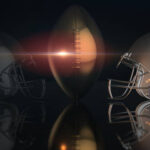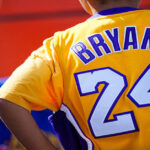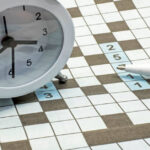The concept of a coin flip seems simple at first glance: a small metal disc is tossed into the air, spins, lands, and shows either heads or tails. Yet beneath that simple motion lies a rich blend of probability theory, historical significance, human psychology, decision-making science, and mathematical modeling. A coin flip is not just a random event; it is a miniature demonstration of how uncertainty, symmetry, and chance work together in a single moment. Understanding coin flips in depth provides insight into how randomness is interpreted, measured, and applied in the real world, from sports and politics to computer algorithms and classroom experiments. In this extensive article, we explore the coin flip from every angle, breaking down its mechanics, mathematical foundations, cultural meaning, fairness issues, and practical applications.
The Origins and Cultural Significance of the Coin Flip
Although the modern coin flip is familiar to nearly everyone, the practice has historical roots that stretch back thousands of years. Ancient civilizations used small objects—often flat stones, bronze tokens, or shells—to settle disputes, determine outcomes, or select leaders. The basic idea was always the same: allow a random physical process to decide something impartially when human judgment might be biased or uncertain. The Roman Empire had a game known as “navia aut caput,” meaning “ship or head,” referring to designs pressed into their bronze coins. Children played it for fun, but adults used it to make fast decisions. Over centuries, the behavior evolved across cultures and became standardized as coins became more universal.
What makes coin flips culturally enduring is their symbolic fairness. Because a coin has two sides, people accept the result as unbiased, making it a neutral method for resolving indecision. Whether two children argue over which game to play or a sports team needs to determine who gets the first possession, the coin flip’s simplicity allows it to serve as an impartial judge. Even in high-stakes political or legal circumstances, officials sometimes use coin tosses to settle ties, highlighting the trust placed in randomness as a neutral arbiter.
How a Coin Flip Works: The Physics Behind the Motion
A coin flip appears random, but its physical motion is governed by deterministic physics. When a person flips a coin, they apply a combination of upward force, torque, and angular momentum. The coin spins around its axis as it rises and falls under gravity. In a controlled universe where every variable could be measured precisely—initial force, rotational speed, air resistance, angle of release, and landing surface—the result would theoretically be predictable. But because these variables vary slightly with each flip, even expert throwers cannot reproduce identical conditions. This inherent sensitivity to initial conditions, similar to chaos theory, is what allows the coin flip to behave randomly for practical purposes.
Mechanical coin-flipping machines, however, demonstrate that randomness can be influenced. If a machine uses the exact same force and angle every time, it may land disproportionately on one side. This is why professional sports events often use carefully monitored flipping procedures to avoid bias. The laws of physics ensure that two random flips will not be identical in motion, but over a large number of flips, the distribution of outcomes begins to resemble the expected mathematical probability.
Probability and Mathematical Foundations of Coin Flips
At the heart of every coin flip lies one of the simplest and most elegant mathematical ideas: a binary random event with equally likely outcomes. The probability of landing on heads is expressed as 1/2, and the same holds true for tails. This 50-50 model assumes the coin is fair, meaning its weight distribution, thickness, and design do not favor one side. Real-world coins come close to this ideal, though slight imperfections might shift probability by tiny margins.
Below is a table showing the basic probability distribution for a fair coin:
Table: Probability of Outcomes for a Fair Coin Flip
| Outcome | Probability | Decimal Value | Percentage |
|---|---|---|---|
| Heads | 1/2 | 0.50 | 50% |
| Tails | 1/2 | 0.50 | 50% |
When a coin is flipped multiple times, the Law of Large Numbers comes into play. This principle states that the more times an experiment is repeated, the closer the outcome will approximate the expected probability. For example, you might flip a coin 10 times and get 7 heads, but flipping it 10,000 times will likely result in a distribution much closer to 50-50.
Beyond Basic Probability: Streaks, Patterns, and Misconceptions
Many people believe patterns in coin flips reflect some kind of deeper meaning. If five flips in a row come up heads, they may assume the next flip is more likely to be tails. This false belief is known as the gambler’s fallacy. In reality, each flip is independent, meaning the outcome of previous flips has no influence on future results. The coin has no memory; every flip is a fresh event governed by the same probabilities.
Another common misconception is assuming that a “balanced” result, such as five heads and five tails in ten flips, is more likely than an unbalanced one. In fact, many combinations are possible and some are equally likely. The mathematical beauty of coin flips lies in the independence of each event, meaning randomness often appears streaky, uneven, or unexpected.
Weighted, Biased, and Trick Coins: How Fairness Can Be Manipulated
While most everyday coins are fair enough for casual use, not all coins are perfectly balanced. Manufacturing differences, uneven engravings, or deliberate tampering can cause slight biases. Magicians sometimes use “double-headed” or “double-tailed” coins for illusions. Casinos carefully inspect and monitor coins and dice for fairness because even a tiny skew can affect outcomes significantly when money is involved.
Below is a table demonstrating how bias affects probability:
Table: Example of a Slightly Biased Coin
| Outcome | Probability | Decimal Value | Percentage |
|---|---|---|---|
| Heads | 0.52 | 52/100 | 52% |
| Tails | 0.48 | 48/100 | 48% |
The difference may appear small, but over thousands of flips, the imbalance becomes highly visible. This is why standardized coins and flipping techniques are used in professional settings.
The Psychological Side of Coin Flips: Why Humans Trust Randomness
Coin flips fascinate psychologists because they reveal how people think about chance, fairness, and uncertainty. When confronted with indecision, individuals often prefer letting a coin decide because it absolves them of responsibility. The coin becomes a neutral mediator, freeing the decision-maker from doubt or guilt. Interestingly, studies show that even when people flip a coin to make decisions, they often secretly hope for one outcome over the other. The flip then acts as a mirror reflecting their true preference rather than dictating it.
Additionally, the idea of “calling” a side before the flip gives participants a feeling of involvement and control, despite the randomness of the event. Humans naturally look for patterns and meaning in random data, which is why streaks in coin flips often capture people’s attention.
Coin Flips in Sports: A Ritual of Neutrality
Coin flips play an essential role in sports worldwide. They determine possession, direction, and opening advantages in games such as football, soccer, rugby, cricket, and tennis. The fairness of the coin flip helps ensure that no team receives a biased advantage before the match begins.
While the flip itself is random, the procedure is usually standardized:
- The official uses a regulation coin.
- The call is made before the coin is tossed.
- The coin must spin at least a certain number of times.
- The landing must be observed clearly.
These rituals strengthen the perception of fairness and remove potential disputes.
Coin Flips in Computer Science: Algorithms, Random Numbers, and Simulation
In computer science, the concept of a “coin flip” appears frequently in algorithms that rely on randomness. Randomized algorithms use digital coin flips to make decisions, optimize processes, break ties, or simulate natural randomness. Although computers do not flip physical coins, they generate binary outcomes that mimic them. These virtual coin flips help build simulations in physics, biology, and finance, enabling researchers to study probability-driven systems.
Monte Carlo simulations, for example, use millions of digital coin flips to estimate the likelihood of complex events. By modeling uncertainty through binary outcomes, computers can replicate randomness on large scales. This demonstrates how the simple coin flip becomes a foundational idea in modern computing.
Coin Flips in Decision-Making: A Tool for Clarity
People often turn to coin flips when dealing with difficult or emotional decisions. Interestingly, the result of the flip sometimes matters less than the participant’s reaction to it. For example, if the coin lands on heads and the person feels disappointed, that emotional response reveals their true preference. Thus, coin flips act as psychological clarification tools rather than strict decision-makers.
Coin flips can also break deadlocks in groups, serve as fun ways to choose between options, or eliminate bias when fairness is necessary. They are fast, simple, and universally understood, making them valuable in everyday life.
A Deeper Look: Probability Patterns Over Multiple Flips
Understanding how outcomes behave over larger numbers of flips can help visualize randomness. Below is a table showing the probability distribution of getting a certain number of heads in ten flips.
Table: Probability of Getting X Heads in 10 Flips (Fair Coin)
| Number of Heads | Probability (%) |
|---|---|
| 0 | 0.10% |
| 1 | 1.00% |
| 2 | 4.40% |
| 3 | 11.70% |
| 4 | 20.50% |
| 5 | 24.60% |
| 6 | 20.50% |
| 7 | 11.70% |
| 8 | 4.40% |
| 9 | 1.00% |
| 10 | 0.10% |
This distribution forms a bell curve where outcomes near the center are more common, reflecting the principles of binomial probability.
Why Coin Flips Matter in Understanding Randomness
Studying coin flips teaches essential concepts about probability, fairness, statistics, and human interpretation of chance. They reveal that randomness is not always intuitive and that human perception often differs from mathematical reality. Coin flips help illustrate independence, expected values, and distribution patterns, making them useful educational tools. They also demonstrate how randomness can be applied in complex systems, from sports fairness to computer algorithms.
Ultimately, a coin flip is more than a simple motion. It embodies centuries of cultural trust, mathematical elegance, psychological insight, and practical utility. Whether used to settle an argument or model a scientific phenomenon, the coin flip remains one of the most powerful symbols of fair and unbiased randomness.
FAQs
1. Is a coin flip truly 50-50?
Yes, assuming the coin is fair and not weighted. Real coins come very close to a 50-50 probability, though tiny imperfections may cause extremely small biases.
2. Can the way you flip a coin influence the result?
Yes. Different forces, spin speeds, and release angles can slightly influence the outcome, but the effect is too small for most practical situations.
3. Do previous flips affect the next flip?
No. Each flip is independent. Past results have no impact on future outcomes, which is why streaks happen naturally.
4. Why are coin flips used in sports?
They offer a fast, universally understood, and impartial way to determine starting advantages such as possession or field direction.
5. Can computers simulate coin flips accurately?
Yes. Digital random number generators can mimic coin flips using binary outcomes, allowing simulations of chance-driven events at large scales.











